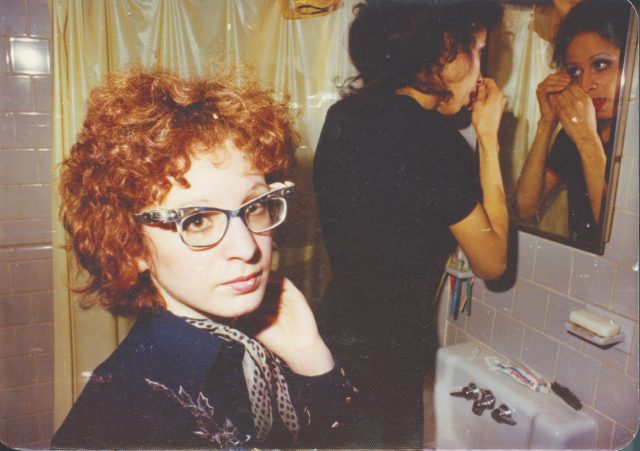
When money talks, who speaks the truth? That’s one of the guiding questions behind All the Beauty and the Bloodshed, the Oscar-nominated documentary by Laura Poitras. But the driving force is Nan Goldin, a celebrated queer photographer and founding member of P.A.I.N. (Prescription Addiction Intervention Now).
Goldin’s work is featured in the permanent collection of some of the best museums and art galleries in the world. And, as luck would have it, she has her sights set on another familiar name found in those same hallowed halls, though it isn’t a name prescribed to a particular work of art or exhibit, but on the plaques and doors bidding welcome to the patrons.
That name, Sackler, probably sounds familiar to anyone reading the news. They are the family behind the pharmaceutical company Purdue Pharma, purveyors of OxyContin, which has led more than one media outlet to refer to them as “drug dealers.” Much of that is covered in The Beauty and the Bloodshed, including Raymond Sackler’s panache for philanthropy, specifically in donations to museums and galleries.
To Goldin, all those millions donated while the Sacklers raked in billions smacks of artwashing. Frankly, there’s little defense for the Sacklers offered in All the Beauty and the Bloodshed — including two stoic members of the family who appear in a Zoom court hearing.
That’s probably because Goldin is on the right side of history. She’s been here before. In the 1980s and ’90s, Goldin watched friends and colleagues die en masse due to the AIDS crisis while a government looked on with indifference when not too busy condemning the dead.
Goldin proves to be the perfect guide through these two chapters of American life. Her story begins in the Boston suburbs, with a mother terrified of what the neighbors might think and a sister with a secret that would consume her. It was a world Goldin would leave without turning her back on, even as she developed her true identity and forged another family.
That was in New York’s Bowery during the ’70s and ’80s. Drugs were everywhere. So were sex and subversion. Goldin captured it all with her camera. It “was a time of black and white vertical photographs,” Goldin recounts, and hers were anything but. They were like motion pictures frozen in time. “No one photographs their own life,” a curator told her. Goldin thought otherwise.
Most artists weave themselves into their art. Looking at the photos Goldin took, you wonder: How could she not? Poitras wisely turns most of All the Beauty and the Bloodshed over to Goldin’s photographs, presenting the bulk of the doc’s runtime as one of Goldin’s slideshows backed by Goldin’s narration.
All the Beauty and the Bloodshed is a rallying cry for justice through demonstration and creativity. One such demonstration involves turning a quote from a Sackler family member on its head to create a moment of beauty so arresting even the demonstrators appreciate it on an aesthetic level. It’s not the only instance of Goldin leading a protest with a visual quality worthy of the gallery in which it takes place. What luck, Poitras must have thought as she captured her protagonist at work. It’s not every day you find an honest human being with a compelling story to tell, who can make it beautiful along the way.
ON SCREEN: All the Beauty and the Bloodshed is streaming now on Apple TV, Amazon Prime and Redbox.














